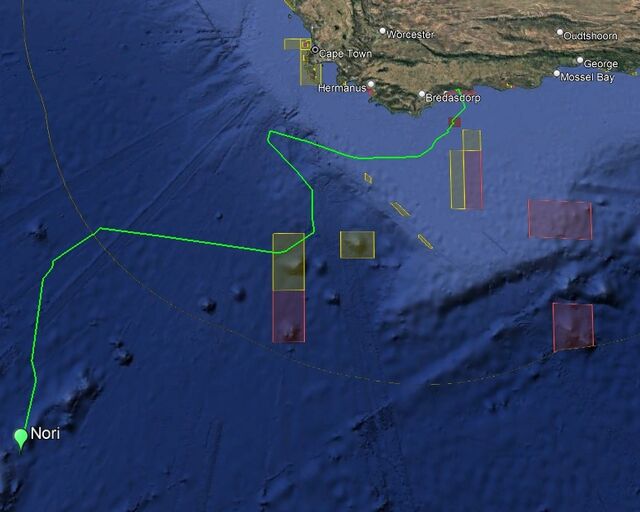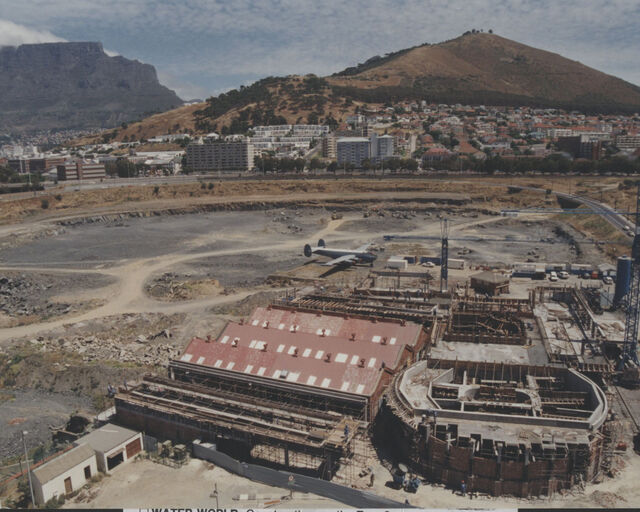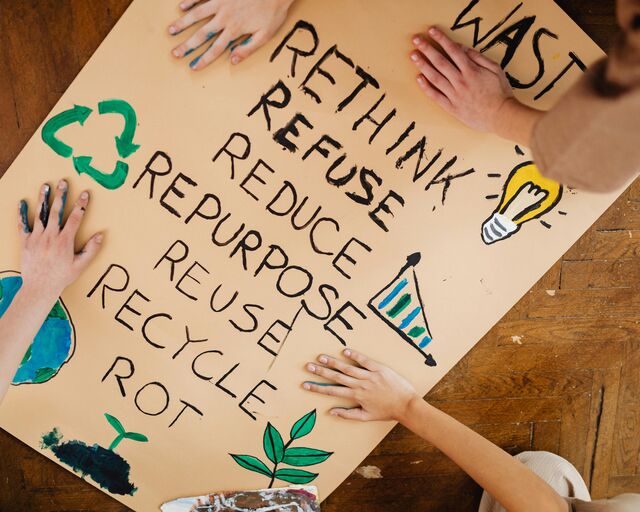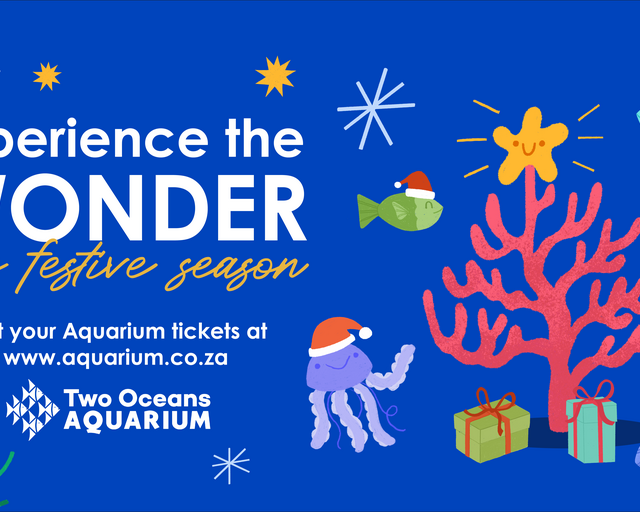Tracking Bob (and Turbo and Pan): terrific turtles
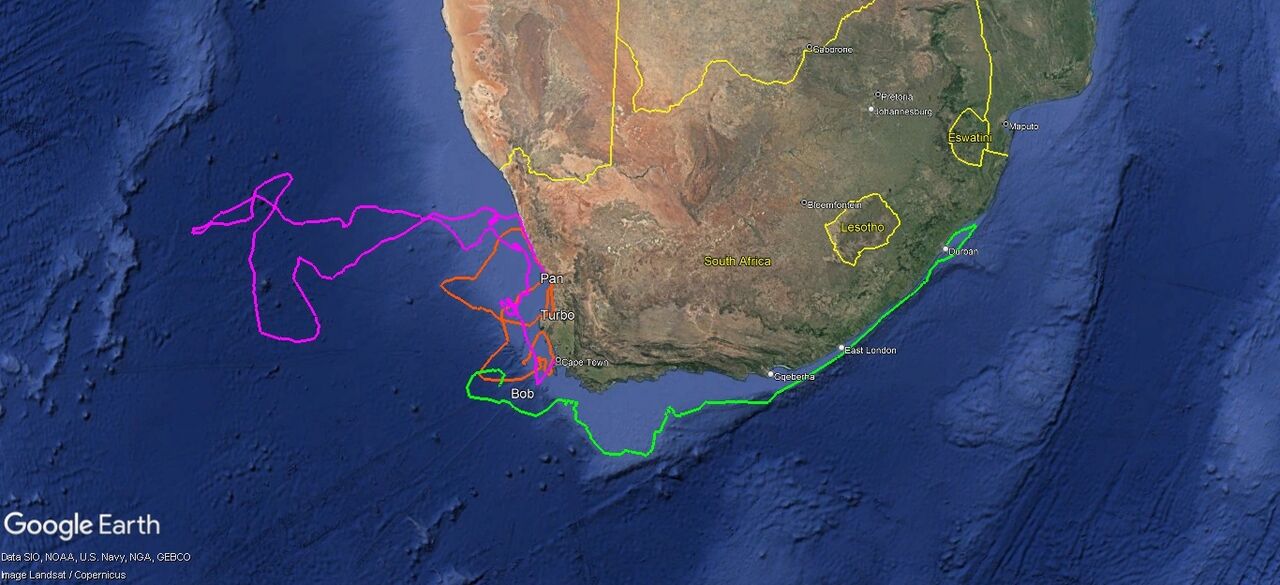
Today's "Bob update" is particularly special because we're also catching up with Turbo and Pan! Some of our Aquarium family may remember that Turbo, a green turtle, and Pan, a loggerhead turtle, were released last year. Bob, a very special green turtle, was released in January - maybe he's already caught up with the others? Let's find out from Talitha Noble, Conservation Manager at the Two Oceans Aquarium Foundation.
Bob's journey so far:
Update #9: 24 March 2023, by Talitha Noble
Today we are marvelling not only at the adventurous travels of Bob but also at our young turtle friends, Turbo and Pan! All three turtles have been making their Aquarium family proud, exploring several Marine Protected Areas (MPAs), venturing into deeper parts of the Atlantic Ocean, and much more!
Bob:
On 19 March, Bob was the furthest West he's been to date: an impressive 290 kilometres southwest of the Turtle Conservation Centre (TCC) at the Two Oceans Aquarium. In the days since then, Bob has followed the gentle surface currents, swimming in a southerly direction and slightly closer to the TCC. Now, he is 190 kilometres from Cape Town!
Beating his personal best for water depth, Bob is currently exploring waters that are 3 800 metres deep! Turtles are a pelagic species - they occupy the open ocean area above the seafloor and below the surface. Most turtles are known as epipelagic, meaning they inhabit the upper 200 metres of the water column. Green turtles can dive to about 300 metres, and we are very impressed that Bob is navigating such deep water. The epipelagic zone is perfect for turtles like Bob - with abundant sunlight comes lots of nutrients and food, allowing turtles to breed, feed, and grow to maturity in this area.
Bob's progress so far has been remarkable. Over the last 56 days at sea, he has swum a total of 2760 kilometres, which equates to 50 kilometres per day! He covered this distance because he remained in the surface currents. At the beginning of his travels, Bob followed the fast-flowing Agulhas Current (averaging about two m/s), but in his current position, the surface currents are much slower (averaging about 0.5 m/s). Bob is swimming smart by not working harder than necessary and not dipping into cold water. Currently, his water temperature is a respectable 21 degrees, which is much warmer than the temperature our younger turtle friends are finding themselves in...
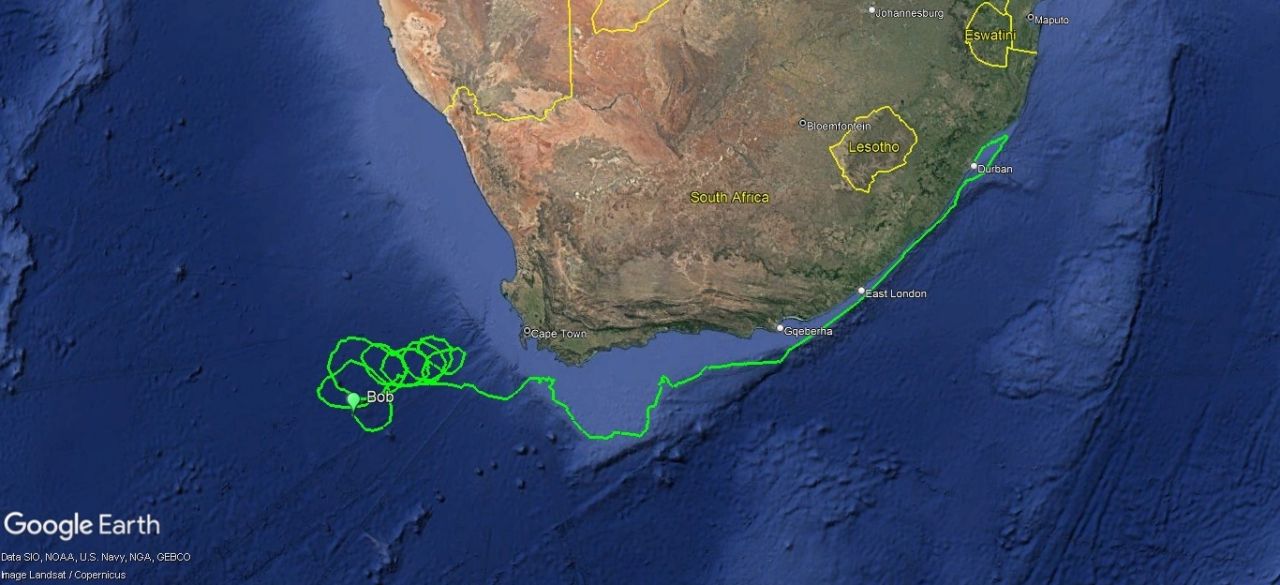
Turbo:
Turbo is a sub-adult green turtle that we released with a cohort of hatchlings in December 2022.
He has been at sea for 101 days and travelled 2265 kilometres! That's an average of 22.4 kilometres per day.
Shortly after his release, Turbo headed inshore and spent some time in the West Coast National Park, which includes several stunning MPAs. After exploring the area, Turbo headed offshore in a northerly direction. He looped around for a while, heading significantly further offshore (340 kilometres!) and then came inland at Hondeklipbaai. Turbo has spent the last three weeks slowly moving south, hugging the coastline and enjoying the diverse marine life.
Currently, he is in the shallower waters of Dwarskersbos. While this West Coast water is quite cold, Turbo has been hanging out over a shallow offshore reef, where the water can be up to 5 degrees warmer (currently, it's about 19 degrees). This spot is also protected from the Southeasterly wind, making it a good spot to hang out all year round!
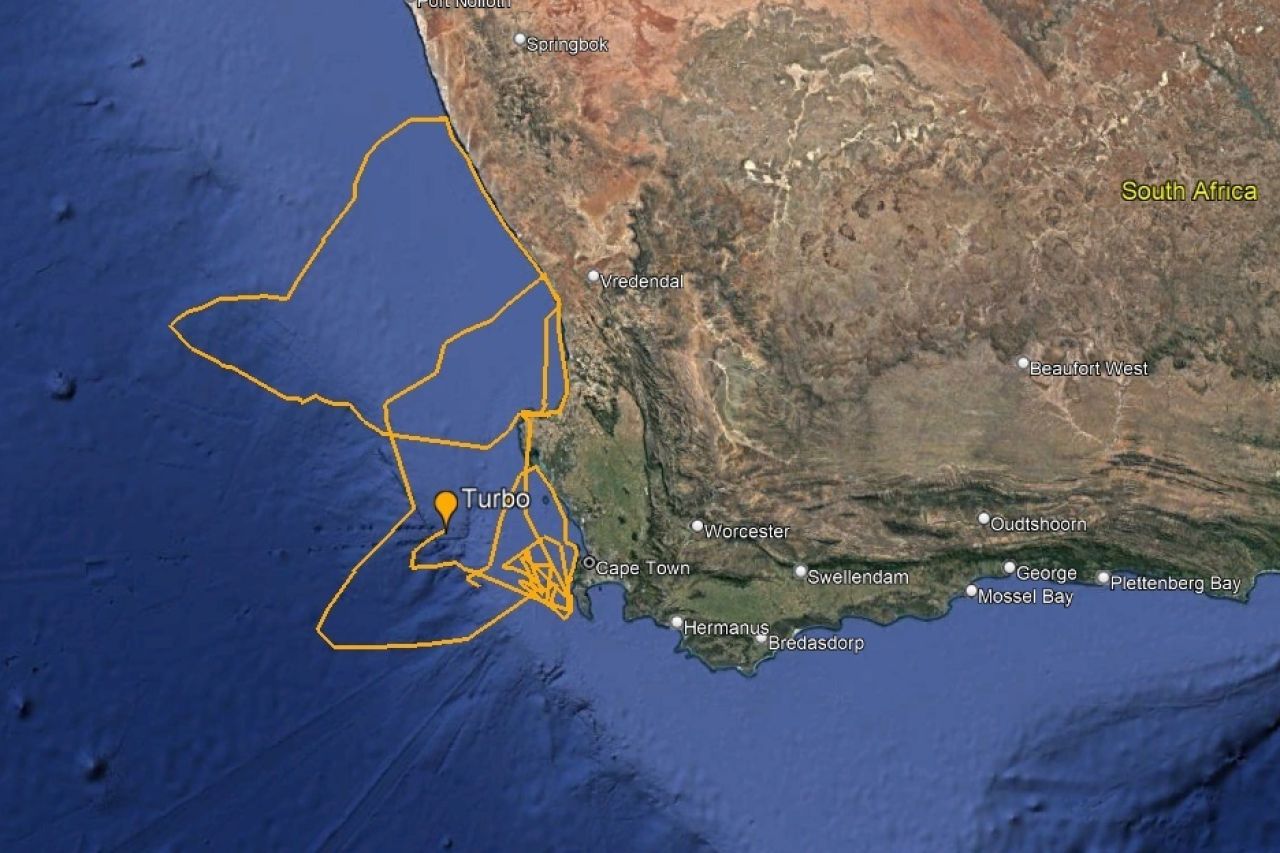
Pan:
Our dearest little Pan, a loggerhead turtle, was released on 7 July 2022 (a wild 259 days ago). Excitingly for us, his tag is still transmitting! In this period, he has travelled 5 600 kilometres, averaging 21.6 kilometres per day. This average distance per day is comparable with Turbo, a turtle of a similar size.
Pan's journey was determined from the start: without hesitating, he headed north into the Atlantic Ocean. By October 2022, he was 1 100 kilometres offshore - it looked like he might have done an Atlantic crossing, but instead, he turned around and started moving closer to land again. On 16 March 2023, Pan made it to the coastal waters of Hondeklipbaai (where Turbo had a pitstop) before following the coast southwards. Currently, Pan is close to Lutzville, which is about 70 kilometres north of Lamberts Bay.
The most remarkable part of Pan's journey is that the water has not been particularly warm during his travels. Certainly, in the last two weeks, it has not been higher than 16-17 degrees!
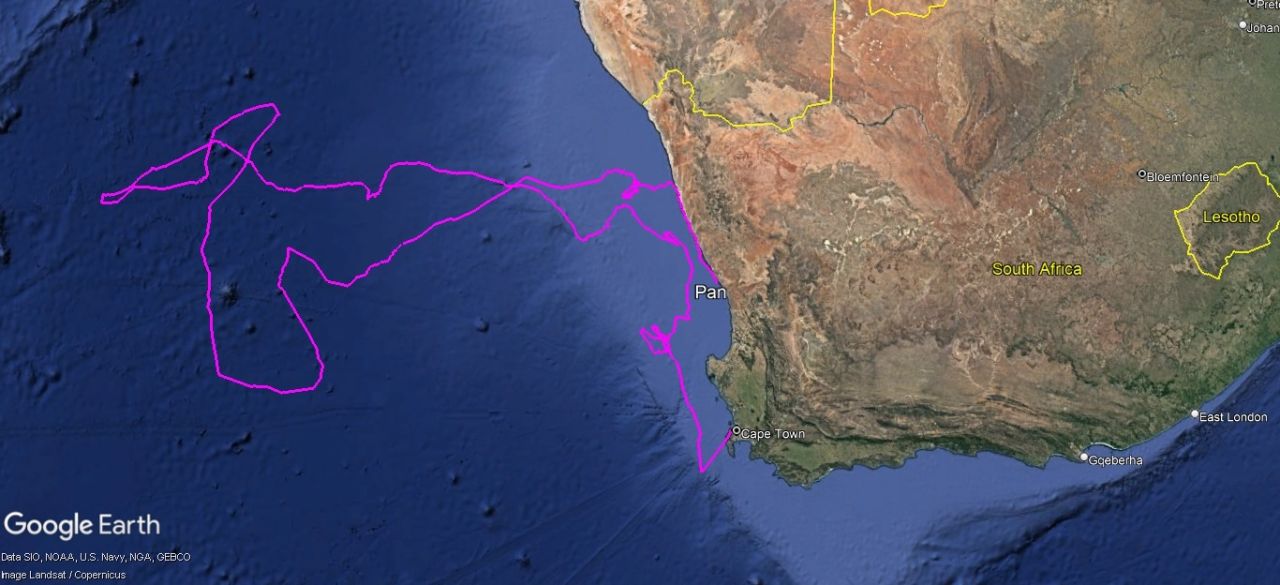
The West Coast of South Africa is filled with mystery when it comes to turtles. As cold-blooded reptiles, turtles typically prefer warmer waters. Yet, despite the cooler and often cold water, many of the turtles we've tracked have intentionally spent significant chunks of time along this Atlantic coast. There is certainly an abundance of food and other marine life in this area, but perhaps we have yet to discover other interesting drawcards.
Where will Bob go next? Will he continue on his path away from the continental shelf? And what about Turbo and Pan? What will their next adventures be?
Keep an eye out for more turtle updates, and remember to subscribe to our turtle update mailer...
Bob stats:
Days since release: 56
Distance travelled: 2 760km
Distance from shore: 190km
Nearest town: Cape Town!!
Water Depth: 3 800m
Catch up on Bob's story
During his eight years at the Two Oceans Aquarium, Bob inspired hundreds of thousands of people to love the ocean and its abundant life just that little bit more. Now that Bob has returned to the ocean, he'll continue to be an incredible turtle storyteller as he sends back data about his adventures. Meanwhile, we'll do what we can to protect his ocean home.
If you missed out on any part of Bob's story, you can catch up here:
Related News
Sign up to our Newsletter
Receive monthly news, online courses and conservation programmes.
